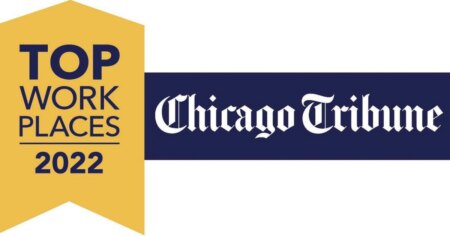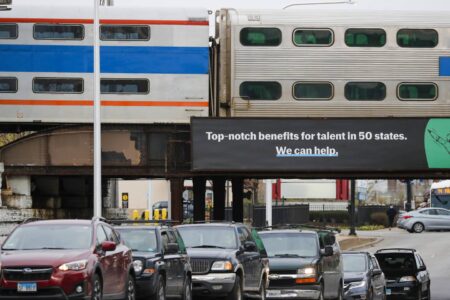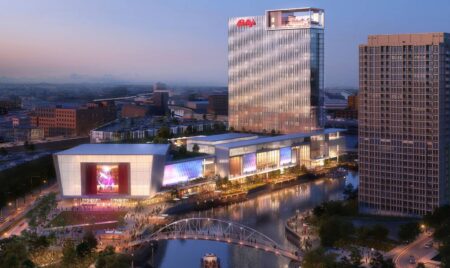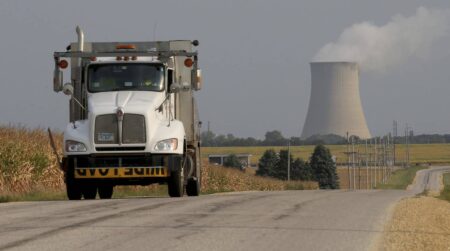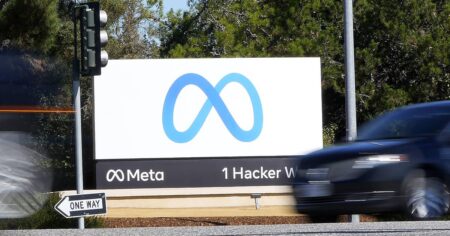Subscribe to Updates
Get the latest creative news from FooBar about art, design and business.
Browsing: Business
The Chicago Tribune has extended to June 17 the deadline for nominations for our 13th annual Top Workplaces special report, in which we explore how organizations create and sustain a positive and productive culture. We’ll also compile a list of this year’s top workplaces in the Chicago area.So far, more than 375 organizations have signed up to participate.AdvertisementA top workplace is successful because its employees enjoy their work, embrace their mission and feel like valued teammates.This year those qualities are more important than ever as companies begin to emerge from the pandemic and, in many cases, start asking employees to return to the office. How will organizations navigate this time of transition and help employees thrive?AdvertisementTo qualify for consideration as a top workplace, an organization must have at least 100 employees in the Chicago area. Nominations are open to all employers, including nonprofits.Now through June, nominated companies that agree to participate will distribute to employees an easy-to-complete, confidential survey developed by the Tribune’s research partner, Energage, which will calculate the list of top workplaces. Last year, Energage surveyed more than 2 million employees at more than 8,000 organizations on these topics.There is no fee to participate. Top performers will be recognized in the report and in an online directory.To nominate a company, go to www.chicagotribune.com/nominate or call 312-878-7356.
Chicago Bears offensive coordinator Luke Getsy on April 12 paid $1.57 million for a six-bedroom, 5,610-square-foot house in southwest Waukegan — and he’ll have plenty of company in his neighborhood in terms of the Bears’ coaching staff.Two other newly hired assistant coaches — defensive line coach Travis Smith and offensive line coach Chris Morgan — also have just bought homes close by.AdvertisementGetsy, 38, was hired by the Bears in January, three days after new head coach Matt Eberflus was announced. Getsy came from the Green Bay Packers, where he had been quarterbacks coach and passing game coordinator.Now, Getsy has nearly as good of a chance of seeing Smith and Morgan in his neighborhood as he will on the practice field at Halas Hall in Lake Forest. Smith, who joined the team in February, paid $950,000 on April 4 for a five-bedroom, 4,304-square-foot house on the same street as Getsy’s house, while Morgan paid $1.1 million on March 18 for a five-bedroom, 4,905-square-foot house that is just a few blocks away.AdvertisementAll three houses are within close proximity to one another, and all three are inside Waukegan’s city limits but have Libertyville mailing addresses.Getsy’s new house, which had been listed on March 1 for $1.59 million, was built in 1998 and has five bathrooms, four fireplaces, a two-story foyer, a two-story family room, a second staircase to the second floor, a main-floor laundry room and an updated white kitchen with quartz-topped cabinetry and high-end appliances. Other features include a primary bedroom suite with a recessed tray ceiling, and a lower level with a media room, a billiard room and a multipurpose room with a glass block wall. Outside on the 1.84-acre property are an in-ground pool and a limestone fire pit.Built in 1992, Smith’s new house has 3 1/2 bathrooms, a great room with a two-story custom fireplace, a kitchen with custom cabinets and two Sub-Zero refrigerators, a first-floor primary bedroom suite with custom millwork in the primary bathroom, and a first-floor den, all on a 1.19-acre property. And Morgan’s new house, which was built in 1998, has 4 1/2 bathrooms, a family room with a fireplace, a kitchen with a central island and quartz countertops, a mud room with custom cabinetry, an English basement with a custom bar and a first-floor primary bedroom suite with vaulted ceilings and a walk-in closet.Alissa McNicholas of Compass represented Getsy, Smith and Morgan in their purchases. She declined to comment on the transactions.Goldsborough is a freelance writer.Join our Chicago Dream Homes Facebook group for more luxury listings and real estate news.
Notice: Undefined index: file in /home/ofzfvenynm4q/public_html/wp-content/themes/smart-mag/inc/media.php on line 688
The U.S. Drug Enforcement Administration has suspended an Evergreen Park pharmacy’s ability to dispense certain controlled substance medications, after it allegedly gave patients dangerous amounts and combinations of drugs.The DEA issued an order to Evergreen Park Pharmacy on Wednesday immediately suspending the pharmacy’s ability to give patients certain medications including oxycodone, morphine, codeine and Valium. Certain drugs are labeled as controlled substance medications because of their potential for abuse and risk.AdvertisementThe order came after a DEA investigation revealed alleged regulatory violations and an Illinois Prescription Monitoring Program review showed that excessive opioids and dangerous drug combinations were allegedly given to three patients. A pharmacy expert who reviewed records found that the quantities and combinations of drugs dispensed to the three patients allegedly were “not for legitimate medical purposes, and could have led to respiratory failure and death,” the DEA Chicago division said in a news release.Hani Abdallah, a pharmacist and the pharmacy’s owner, said Thursday when contacted by the Tribune that the pharmacy did nothing wrong and plans to fight the suspension. The pharmacy is still dispensing other types of medications not covered by the suspension.AdvertisementAbdallah said he knows the three patients well, and they were all using the medications for legitimate purposes. He said they started on high amounts of the medications, but he was able to lower them.“I think I did a good job at bringing them down, and for the DEA to come in and do that, it’s just not right,” Abdallah said.When suspensions are issued, pharmacies have the right to administrative hearings before an administrative law judge renders a final decision about whether to revoke a pharmacy’s registration to legally dispense controlled substance medications. State-licensed pharmacies must be registered with the DEA to legally dispense controlled substance medications.In recent years, doctors and pharmacies have come under scrutiny for how they prescribe and dispense certain medications, such as opioids, which can be addictive and lead to death when people overdose on them.The state and nation have been dealing with an epidemic of opioid addiction, exacerbated by the pandemic.In 2020, the number of opioid deaths in Illinois rose 33% compared with 2019, according to Gov. J.B. Pritzker’s office. In March, Pritzker announced a statewide Overdose Action Plan to help address the issue in some of the state’s hardest-hit areas.
Metra is preparing to replace nearly a dozen aging rail bridges along a stretch of Chicago’s North Side, marking the long-delayed next phase of a bridge project that began more than a decade ago.Metra officials say their preferred plan for the project on the busy Union Pacific North Line would mean minimal changes to commuter train schedules. But property owners who live near the project raised concerns that the construction plan will harm them and their homes.AdvertisementThe $262 million project involves replacing 11 bridges, nearby track and retaining walls along the Union Pacific North Line between Fullerton Avenue in Lincoln Park and Cornelia Avenue in Roscoe Village. The bridges are around 120 years old, and are beyond their useful life span, Metra has said.The project is still being designed, but Metra’s preferred option involves shifting the tracks about 20 feet to the west within the existing railroad property, in a series of moves that will allow service to continue on two tracks during construction.AdvertisementA train travels over the railroad bridge on West Fullerton Avenue, just west of Clybourn Avenue in Chicago on April 28, 2022. (Jose M. Osorio / Chicago Tribune)Underpasses would get new lighting and improvements, and Roscoe Street and Cornelia Avenue would be lowered to keep the current clearance between the streets and the new, larger bridges, which would be slightly raised in most other places. A bridge at Lincoln Avenue and Addison Street would be refurbished and painted, but not replaced.Construction is expected to begin in summer 2023 and last five years.The work is part of a broader effort to replace 22 bridges along the line and rebuild the Ravenswood station. It was initially set to begin in 2010 at a cost of $185 million at the time, and last eight years.The first part of the work was delayed about a year after Metra tried to reduce service to a single track during construction, wreaking havoc for commuters and leading to complaints about late and crowded trains, the Tribune previously reported. The agency eventually revised plans so it could keep two tracks in service and avoid major schedule changes, raising the expected cost.Years later, parts of the project were again delayed by budget issues, partly linked to state funding concerns at the time and partly to the expense of installing a federally-mandated train safety system, the Tribune has reported. Work on the first 11 bridges farther north along the line has been completed, and the Ravenswood Station construction is expected to be finished this year, Metra spokesman Michael Gillis said.Bridge underpasses would get new lighting and improvements, and Roscoe Street and Cornelia Avenue, seen here, would be lowered to keep the current clearance between the streets. (Jose M. Osorio / Chicago Tribune)Metra learned its lesson from the earlier attempt to reduce service to a single track for the first 11 bridges, Gillis said. The agency considered reducing service to a single track this time around, as well as other construction options, but deemed they would lead to delays and higher construction costs.If it moves forward as planned, the new round of construction work is not expected to interrupt service during weekday rush periods. Slow zones might be needed at times, Metra said, and trains could be funneled onto a single track outside of rush hour.Metra recently tweaked scheduled on the Union Pacific North Line, including eliminating four midday trains, though Gillis said their elimination was largely tied to a different construction project. The number of trains the agency is now running on the line is comparable to 2019 levels.AdvertisementThe construction comes as Metra looks to continue reclaiming riders. One day this week, Metra provided 14,500 passenger trips on the Union Pacific North Line, about 42% of pre-COVID-19 levels. Gillis said Metra hopes more riders will have returned by the time construction starts.“We hope (nearby homeowners) understand that the bridges need to be replaced, and we need to do it in a way that the line is still operational,” Gillis said.That was one point of contention for homeowners who packed a recent public meeting, asking questions and grilling project leaders during a heated discussion. Some said Metra’s focus should not be on disrupting service for commuters in the short term at the expense of the long-term effects on their property.Sharl Ludwig was among a group of homeowners who live along the west side of the train line who are upset with the construction plan. She said her property backs onto the tracks, and she worried about the effects of increased vibrations on her century-old home and fumes from diesel engines that would be running closer to her house.Ludwig also worried that putting up a new retaining wall will block her route out of her backyard in an emergency, she said.“It’s going to change a lot of people’s lives, and most of them not for the good,” she said.AdvertisementJoe Hesse, who lives on the east side of the tracks, said he feels bad for people on the other side of the tracks who will have trains running closer to their properties. He also worries about noise, traffic and street closures throughout the area for years during construction.He and his neighbors have planted a garden along a swath of the railroad embankment in an effort to clean up and beautify the area, and he imagines at least some of it will be destroyed during construction. Still, he understands the need for the project.“They have to redo the bridges,” he said. “They’re falling apart.”A person walks their dog underneath the railroad bridge on West Fullerton Avenue, just west of Clybourn Avenue on April 28, 2022. Union Pacific is planning to replace tracks and rebuild 11 aging bridges along the Union Pacific North line between Fullerton and Addison. (Jose M. Osorio / Chicago Tribune)Union Pacific owns the train tracks, but Metra is on the hook for the project because the stretch of tracks is not used by freight trains, Gillis said.For decades there were three sets of tracks on the line, but the third set was removed around 1980 by the owners at the time. Metra does not intend to add a third set of rails but will maintain space for them after the project.Metra is also undertaking bridge work elsewhere in Chicago, Gillis said. In one instance, bridges farther north on the Union Pacific North Line near Peterson and Ridge avenues will be replaced as part of construction of a new station.AdvertisementOther bridges being rebuilt this year include one on the Milwaukee North Line on Chicago’s Northwest Side and on the Rock Island line on the South Side. Repair work is taking place on Metra Electric bridges.The Union Pacific North Line has a particularly large number of bridges through Chicago compared with other Metra lines, Gillis said.sfreishtat@chicagotribune.com
El Milagro committed “flagrant” violations of state labor law for allegedly denying employees proper meal breaks and has been referred to the Illinois attorney general’s office, according to the Illinois Department of Labor.In a notice of noncompliance dated March 23, the agency found the Chicago tortilla maker had violated the Illinois One Day Rest in Seven Act because employees regularly worked over 7.5 hours without required meal breaks. The Department of Labor found 112 meal break violations between Jan. 1 and July 31, 2021, and was fined $11,200 in total for those violations, according to the document.AdvertisementThe findings, which were released to the Tribune through a Freedom of Information Act request, come after workers at El Milagro filed a complaint with the Department of Labor in late October 2021.Advertisement“Because El Milagro has not paid these penalties or demonstrated that it has come in to compliance, this matter has been referred to the office of the Illinois attorney general for enforcement,” department spokesperson Paul Cicchini said in an email to the Tribune Wednesday.Drew Hill, a spokesperson for the attorney general’s office, said Wednesday the office had received the referral and would review it. “We do not have any further updates at this time,” Hill said.In a statement, El Milagro spokesperson Alejandra Moran said the company had not yet received communication from the attorney general’s office. She said should an action be filed based on “prior discussions with the Illinois Department of Labor,” the company “disputes the allegations and intends to vigorously defend the matter in court.”“The company is confident its ongoing commitment and dedication to employees, including fair wages, regular meal and rest breaks, and days off, will prevail,” Moran said. “El Milagro welcomes an unbiased review of the evidence, including facts that should have been considered as part of a fair and reasonable investigation.”When asked what facts she was referring to and whether the company had paid the fine, Moran said the company could not comment further on open legal matters.AdvertisementIn a statement, Arise Chicago, the nonprofit workers’ rights group organizing with the El Milagro workers, said the department’s findings were “sadly, not surprising based on what workers have reported to Arise Chicago.”“This is just more evidence that El Milagro has systematically violated its workers rights. And it amplifies how courageous the workers have been to stand up to exploitation,” Arise said. “We applaud IDOL for its investigation and look to the Illinois attorney general to fully enforce IDOL’s ruling.”Last September, employees at El Milagro staged a brief walkout, alleging low pay and unjust working conditions. After the walkout, workers were locked out of the facility, a practice Arise Chicago alleged was illegal.Earlier this month, workers said they had secured a slate of wage and workplace improvements after months of organizing. Employees said they were no longer required to work seven days in a row and had seen improvements like anti-sexual harassment training for managers and air conditioning in lunch rooms. Workers also saw two rounds of raises last year, which brought starting wages up to about $16.50 per hour, with most other workers now earning between $17 and $20 per hour, according to Arise Chicago.El Milagro disputed the wage increases were the result of worker activism.Workers said earlier this month that despite improvements, other changes were still necessary. They pointed to increases in the speed of work machines, which they described in a letter to company management as creating “hazardous and untenable” working conditions.AdvertisementThey also alleged the company had not followed through on a verbal commitment to provide Sundays off and that third-shift workers at the company’s 31st Street location were regularly sent home early in possible violation of Chicago’s Fair Workweek Ordinance.Shelly Ruzicka, communications and development director for Arise Chicago, said Wednesday workers were no longer reporting lost hours at the company’s 31st Street location. However, she said, they believed machine speeds were still dangerously high, and are still calling on the company to close on Sundays and to sit down with them to discuss their concerns.“El Milagro will not comment further on open legal matters,” the company said in a statement. “As it has for 70 years as a family-owned, local business, El Milagro continues to respect the rights of every employee, provides fair wages and attractive benefits, and operates with integrity.”Workers at El Milagro have also filed complaints with Chicago’s Office of Labor Standards and with the National Labor Relations Board. Representatives from each agency said investigations into those complaints were ongoing.Chicago Tribune’s Laura Rodríguez Presa contributed.tasoglin@chicagotribune.com
Higher U.S. menu prices and easing COVID-19 restrictions elsewhere helped McDonald’s offset troubled markets like China and Russia in the first quarter.Revenue rose 11% to $5.66 billion in the January-March period, topping Wall Street expectations of $5.57 billion, according to analysts polled by FactSet.AdvertisementThe Chicago burger giant announced in early March that it would temporarily close 850 stores in Russia. It continues to pay its 62,000 employees in the country. It also closed 108 restaurants in Ukraine in February and is paying its employees there as well.McDonald’s has said it expects to lose $50 million per month in sales from the Russian store closures alone.AdvertisementMcDonald’s spent $27 million on salaries, leases and supplier payments in Russia and Ukraine during the quarter. The company also said it has $100 million worth of inventory it will probably dispose of since its restaurants are closed.Excluding costs in Russia and Ukraine and other one-time items, McDonald’s earned $2.28 per share for the quarter, well ahead of analyst forecasts of $2.17 per share.Global same-store sales, or sales at stores open at least a year, rose nearly 12% for the quarter. The easing of COVID restrictions in many markets, including the United Kingdom, France and Brazil, boosted sales, McDonald’s said.In the U.S., same-store sales rose 3.5%. China reported negative same-stores sales as it struggled with a COVID resurgence and new restrictions.Shares of McDonald’s Corp. edged higher before the opening bell Thursday.
Chicago casino finalists: What to know about the bids, from the locations to the possible roadblocks
Chicago is one step closer to a potential big revenue boost and achieving a goal that has eluded local mayors for decades: its first casino.Still, the project will have to clear major hurdles as Mayor Lori Lightfoot’s administration sorts through the proposals — which have been whittled down from five to three — and picks a winner.The three remaining bids advanced by the city may represent the path of least resistance for a Chicago casino. But none has landed without some objections or concerns, which the city may have to confront before it narrows the group down to a single favored plan, which officials said will be by early summer. It would still need to win state approval.A Chicago casino study in summer 2019 pointed to the merits of a downtown location close to hotels and other attractions, instead of in outlying neighborhoods that out-of-towners with money to spend might deem unsafe. But the same study also argued that the project could fail to attract developers because the original tax structure lawmakers approved was “very onerous” and would have left razor-thin profit margins for the potential owner.Lightfoot plans to select the operator and location of a Chicago casino in “early 2022,” officials said.Here’s what you need to know about the whole process, from the bids to their locations.Proposed $1.6 billion Bally’s Chicago casino, hotel and entertainment complex at the site of the Chicago Tribune Publishing Center, located on the corner of Chicago Avenue and Halsted Street. It is one of three bids remaining after the city rejected two proposals involving McCormick Place. (Solomon Cordwell Buenz (SCB))The rejected proposals for what is expected to be Illinois’ largest gambling establishment include a $1.3 billion Rivers Chicago McCormick bid to redevelop Lakeside Center, which developers touted as an opportunity to repurpose and renovate the 50-year-old steel-and-glass exhibition hall. McCormick Place said it has 235 events scheduled there that could not be rescheduled without a replacement.The city also turned down Bally’s proposal for a $1.6 billion casino at the McCormick Place Truck Marshaling Yards, a 28-acre freight staging area at 31st Street and Jean Baptiste Point DuSable Lake Shore Drive. The proposed site not only faced opposition from nearby Bronzeville residents, but was also committed to another developer by McCormick Place until 2023. > > > Read more hereAdvertisementAld. Tom Tunney, 44th, speaks during a community engagement meeting about a proposed casino by Bally’s Corporation on April 6, 2022. (John J. Kim / Chicago Tribune)The city, which is banking on a casino to generate $200 million in annual tax revenue to plug its public pension funding holes, plans to submit its choice to the Illinois Gaming Board for approval in time to include upfront payments from the winning bidder in the 2023 fiscal budget this fall, said Ald. Tom Tunney, 44th, chairman of the the Special Committee on the Chicago Casino.“We would like to be able to, hopefully, within the next month, get narrowed down to one and then obviously go through this process with the nominee,” Tunney said April 25. > > > Read more hereAdvertisementRendering of Rivers Casino at The 78, a 62-acre South Loop mixed-use development site where Rush Street Gaming and developer Related Midwest have partnered to build a proposed Chicago casino. (Related Midwest)If Rivers 78 gets the nod as the Chicago casino, developers plan to launch the temporary facility in an old-school vessel: a renovated riverboat docked at the South Loop site along the Chicago River.The riverboat, which holds about 1,000 gaming positions, could be up and running within six months of approval, providing a temporary “mini-Rivers” casino on the river while the permanent facility is built, Tim Drehkoff, the new CEO of Rush Street Gaming, said during a community engagement meeting April 7. > > > Read more hereAdvertisementChicago Tribune Freedom Center along Chicago Avenue between the Chicago River and Halsted Street on March 22, 2022. (Chris Sweda / Chicago Tribune)Bally’s plans to use a former Tribune Publishing warehouse once earmarked for a residential and office development as its temporary casino while Freedom Center is demolished and the permanent facility is built.That was perhaps the biggest takeaway as Bally’s met with hundreds of skeptical River West neighbors inside the vacant 120,000-square-foot building April 6 to pitch a proposed $1.74 billion casino, hotel and entertainment complex that would supplant the nearby Freedom Center printing plant, if approved as the Chicago casino. > > > Read more hereAdvertisementInformation packets are left on chairs for attendees during a community engagement meeting about a proposed casino by Bally’s Corporation at the site of the Chicago Tribune printing plant on April 6, 2022. (John J. Kim / Chicago Tribune)“Big changes can be made,” said Curt Bailey, president of Related Midwest, the developer behind the proposed Rivers 78 casino in the South Loop. “We want to be great neighbors and want the neighbors to want to be around us.”The effort to win over neighbors and the mayor’s office before the city’s anticipated early summer decision to forward a proposal to the Illinois Gaming Board for final approval has already led to some changes. > > > Read more hereAdvertisementRendering for the proposed Rivers Chicago McCormick, a partnership between Rush Street Gaming and Farpoint Development that would redevelop the mostly vacant Lakeside Center — formerly the East Building — at McCormick Place, as a casino. (RM Design Studio / HANDOUT)As Chicago nears a decision on a winning casino bid, there is a lot at stake for the city, which could boost its financial fortunes and help plug its public pension funding holes with upward of $150 million in annual casino tax revenue, according to projections.But with three of the five proposals planning to use the McCormick Place campus, there may be a wild card in the works. McCormick Place has yet to strike a deal with the city or the developers, and is something less than all in on repurposing any of its convention center facilities as a casino. > > > Read more hereAdvertisementView looking north from approximately 18th Street, west of Lake Shore Drive to illustrate plans for a 34-acre development near Soldier Field, mostly on platforms built over Metra tracks on March 13, 2019. (E. Jason Wambsgans / Chicago Tribune)City officials are sifting through the bids, including one from Hard Rock International that would set the gambling emporium in a massive mixed-use project, One Central, which developers hope to build over train tracks west of Soldier Field. City Hall staff members are tasked with recommending to the mayor which casino plan she should present to aldermen for approval. > > > Read more here
ComEd customers will begin receiving a credit for about $20 per month in June, an unexpected dividend from the state’s bailout of three struggling nuclear power plants last fall.The carbon mitigation credit, which will show up as a new line item on ComEd bills through May 2023, will save the average customer $237 over a year, the Illinois Commerce Commission announced Wednesday.AdvertisementThe estimated $1 billion credit reflects a dramatic reversal of fortune for Illinois ratepayers and a trio of nuclear plants that were subsidized as part of the Climate and Equitable Jobs Act. In September, Gov. J.B. Pritzker signed the clean energy bill into law, which requires Illinois utilities to get 40% of their power from renewable sources such as solar and wind by 2030. The bill also provided funding to support the Byron, Dresden and Braidwood nuclear plants as clean energy sources.Byron Generating Station in Byron, Tuesday, Sept. 7, 2021. (Antonio Perez / Chicago Tribune)ComEd parent company Exelon had threatened to close the underperforming Byron and Dresden plants without legislative action. The nuclear bailout was expected to cost ComEd ratepayers $700 million over five years, but rising energy prices combined with Russia’s invasion of Ukraine have suddenly made the three nuclear plants more profitable.AdvertisementChicago-based Exelon spun off Constellation, its former power generation subsidiary, into a stand-alone company in February.“To date, Illinois consumers have not paid a penny to nuclear plants under the law, and instead will be receiving a substantial credit,” Constellation spokesman Paul Adams said in a statement Wednesday. “Should energy prices fall again, the law ensures that these plants have the financial security to remain in operation and continue to advance the state’s ambitious climate goals.”While Adams said the state’s clean energy bill is “working exactly as intended,” the $1.7 billion swing from a ratepayer-funded subsidy to a credit was not the outcome many had expected when it was enacted last fall.“It is a surprise,” said David Kolata, executive director of the Citizens Utility Board, a nonprofit Illinois watchdog group. “But the main driver of energy prices being higher is the Russian invasion, and I don’t know if people predicted that.”Kolata said the clean energy bill acts as a hedge against fluctuating energy prices for both Constellation and the ratepayers. The subsidy provides certainty for the nuclear plants, which before the passage of the bill said they couldn’t compete with cheaper energy from fossil fuels and subsidized renewable sources such as wind and solar. With the sudden spike in energy prices, the bill now protects the consumers.“This was in the bill, because if the nuclear plants don’t need the money, they shouldn’t get the money,” Kolata said. “We’re getting a refund being paid for by the nuclear plants, because they’re earning more than they agreed to.”While consumers are coming out ahead in year one, lower energy prices could swing the nuclear plant bailout back to a ratepayer-funded subsidy in subsequent years, Kolata said.The credit will appear on ComEd bills beginning in June on a line item called “Carbon-Free Energy Resource Adjustment.”AdvertisementEarlier this month, ComEd filed with the ICC for a proposed $199 million increase in electricity delivery charges, seeking the largest rate hike since 2014. If approved by state regulators, it would add $2.20 per month to the average residential customer bill beginning in January 2023.ComEd delivers electricity to more than 4 million customers across northern Illinois.rchannick@chicagotribune.com
Ford Motor Co. reported Wednesday that it lost $3.1 billion in the first quarter, weighed down by its investment in an electric-vehicle startup, and its revenue slid as a shortage of chips limited the supply of pickups and SUVs in North America.Company executives pointed away from the loss and toward results that excluded the lower value of its stake in Rivian. Ford said that it made $2.3 billion in pretax profit and is still on track to hit its full-year target for that measurement.AdvertisementFord said it sold 966,000 vehicles in the first quarter, down 9% from a year earlier.Sun visors are installed on a Ford F-150 Lightning Electric pickup truck on a factory line in Dearborn, Mich., April 4, 2022. Ford Motor said on Wednesday, April 27, 2022, that it lost $3.1 billion in the first three months of the year because of a sharp drop in the stock price of Rivian, an electric vehicle start-up that Ford has taken a stake in. (Sylvia Jarrus/The New York Times)Chief Financial Officer John Lawler said the quarter produced mixed results.Advertisement“Clearly the demand for our new products is very strong,” Lawler said, “yet we continue to have issues with supply of chips, which constrained us, and in particular here in North America, it hit us disproportionately on our large vehicles.”The chip shortage has caused Ford and General Motors to close multiple North American factories for a week or two at a time, including plants that build popular full-size pickups.Ford executives said they also faced inflationary pressure from suppliers, but have been able to recover that in higher vehicles prices. They said additional increases were possible if inflation continues to run high.The company said this week that it has built about 2,000 copies of its new electric pickup, the F-150 Lightning, at a plant near Detroit and would begin delivering them to customers. The truck is critical to Ford’s hopes of gaining a bigger share of electric-vehicle sales.CEO Jim Farley said Wednesday that buyers of the F-150 Lightning are generally not traditional truck owners.“The customer profile is dramatically younger. It’s in states like California and New York that we normally don’t sell full-size trucks,” he said on a call with analysts.The appeal of electric vehicles to younger consumers helped drive investor interest in Rivian. Ford’s 12% stake was worth more than $10 billion after the startup’s IPO in November. But after nearly touching $180, the shares have since tumbled — they closed Wednesday at $31.22 — dragging down the value of Ford’s stake.Ford’s loss contrasted with General Motors, which reported a $2.94 billion quarterly profit on Tuesday.AdvertisementThe first-quarter loss of $3.11 billion compared with a profit of $3.26 billion in the same period last year. Revenue skidded 9% lower that a year ago, to $34.48 billion. Ford said it earned 38 cents a share in the latest quarter after adjusting to exclude one-time items.Analysts expected Ford to earn an adjusted 37 cents per share on revenue of $34.53 billion, according to a FactSet survey.The company based in Dearborn, Michigan, stood by its target of achieving full-year earnings before interest and taxes of $11.5 billion to $12.5 billion.Ford’s shares rose about 1% in after-hours trading after gaining 1% during the regular session.
Facebook parent Meta’s first quarter profit and its count of daily users jumped past Wall Street’s expectations despite the company’s slowest revenue growth since going public a decade ago. Shares were up sharply in after-hours trading.Meta cut a sharp contrast with Google parent Alphabet, which on Monday reported what analysts called disappointing earnings, with profit below Wall Street’s expectations. Google also reported a revenue growth slowdown, but for Meta this appeared to have been mitigated by an increase in daily active users that “was enough to send the shorts covering and the stock surging,” said Jesse Cohen, senior analyst at Investing.com.Advertisement“That being said, it was a mixed report overall as the social media giant continues to struggle with slowing revenue growth amid reduced ad spending amid the current inflationary environment,” Cohen said.Apple’s recent privacy changes to its iPhone software iOS have made it harder for companies like Meta to track people for advertising purposes, which also puts pressure on the company’s revenue. For months now, Meta has been warning investors that its revenue can’t continue to grow at the breakneck pace they are accustomed to, so it’s likely that the quarter’s single-digit revenue growth was already baked into investor expectations.AdvertisementCEO Mark Zuckerberg said in a conference call with analysts that the revenue acceleration Meta saw during the pandemic has now tapered off and the company will now “slow the pace of some of our investments” so it can continue to grow profits. This mainly refers to Meta’s Reality Labs segment, which encompasses its futuristic “metaverse” project. The company, which changed its name to Meta Platforms last fall, invested more than $10 billion in Reality Labs — which includes its virtual reality headsets and augmented reality technology — in 2021.The company earned $7.47 billion, or $2.72 per share, in the January-March period. That’s down 21% from $9.5 billion, or $3.30 per share, in the same period a year earlier.Revenue rose 7% to $27.91 billion from $26.17 billion — the slowest growth rate in a decade for the online advertising powerhouse that generally reports sales growth in the double digits.Analysts, on average, were expecting earnings of $2.56 per share on revenue of $28.28 billion, according to a poll by FactSet.“Meta’s ad business continues to face some very real challenges,” said Jasmine Enberg, an analyst at Insider Intelligence. Facebook, of course, is no stranger to obstacles, but the iOS changes are the first direct threat to its ad business.”That’s in addition to competition from TikTok and changes in how people use social media that threatens Meta’s prospects.Facebook had 1.96 billion daily active users on average for March 2022, an increase of 4% year-over-year. While this is a positive sign following last quarter’s dropoff, Insider Intelligence analyst Evelyn Mitchell pointed out that most of this growth came from outside the U.S. and Canada, which makes less money for the company.Shares of the Menlo Park, California-based company rose $23.05, or 13.2%, to $198 in after-hours trading Wednesday. The stock has taken a hit this week amid news of Elon Musk’s Twitter buyout and ended regular trading down 3.3% at $174.95.




